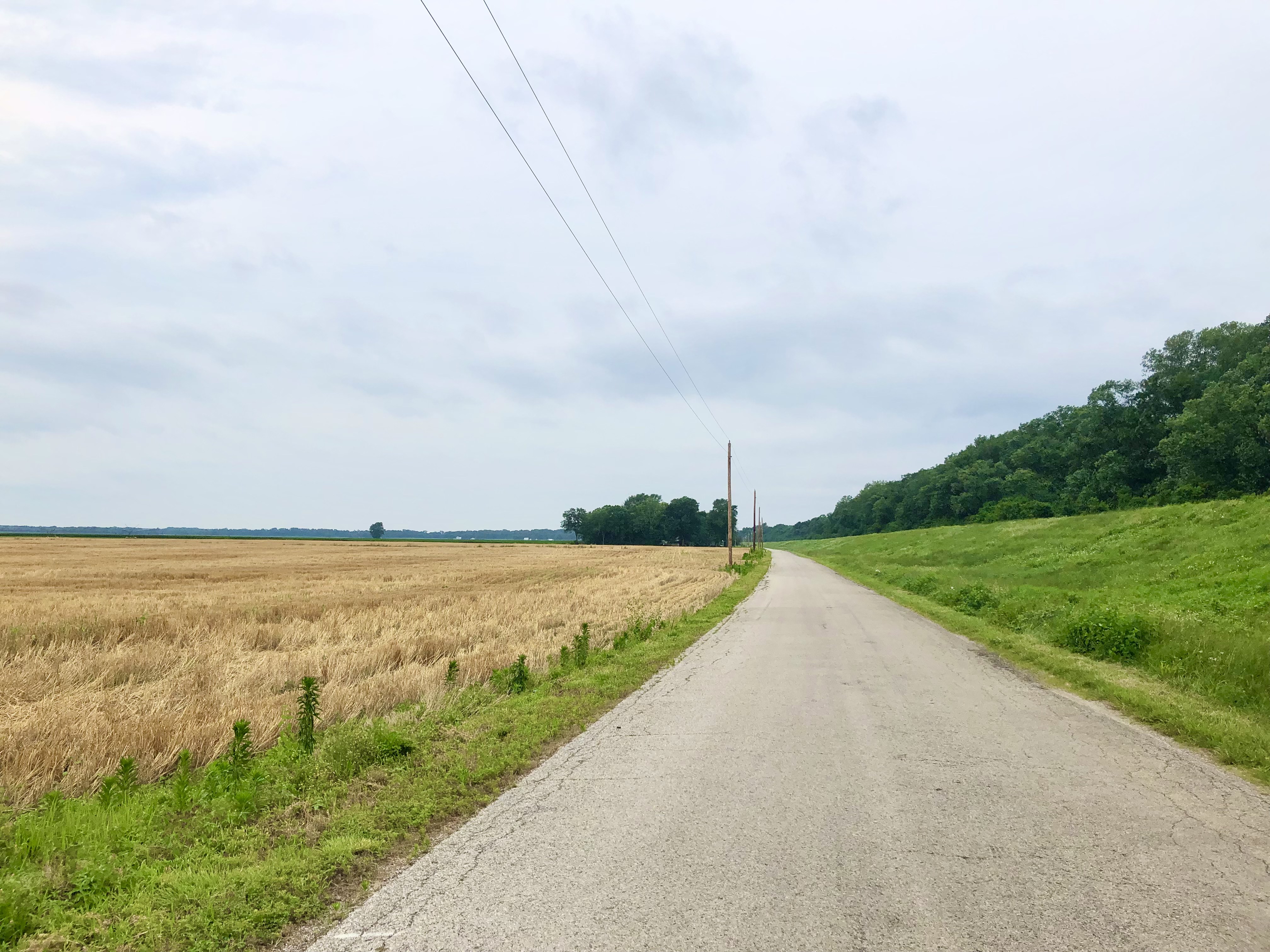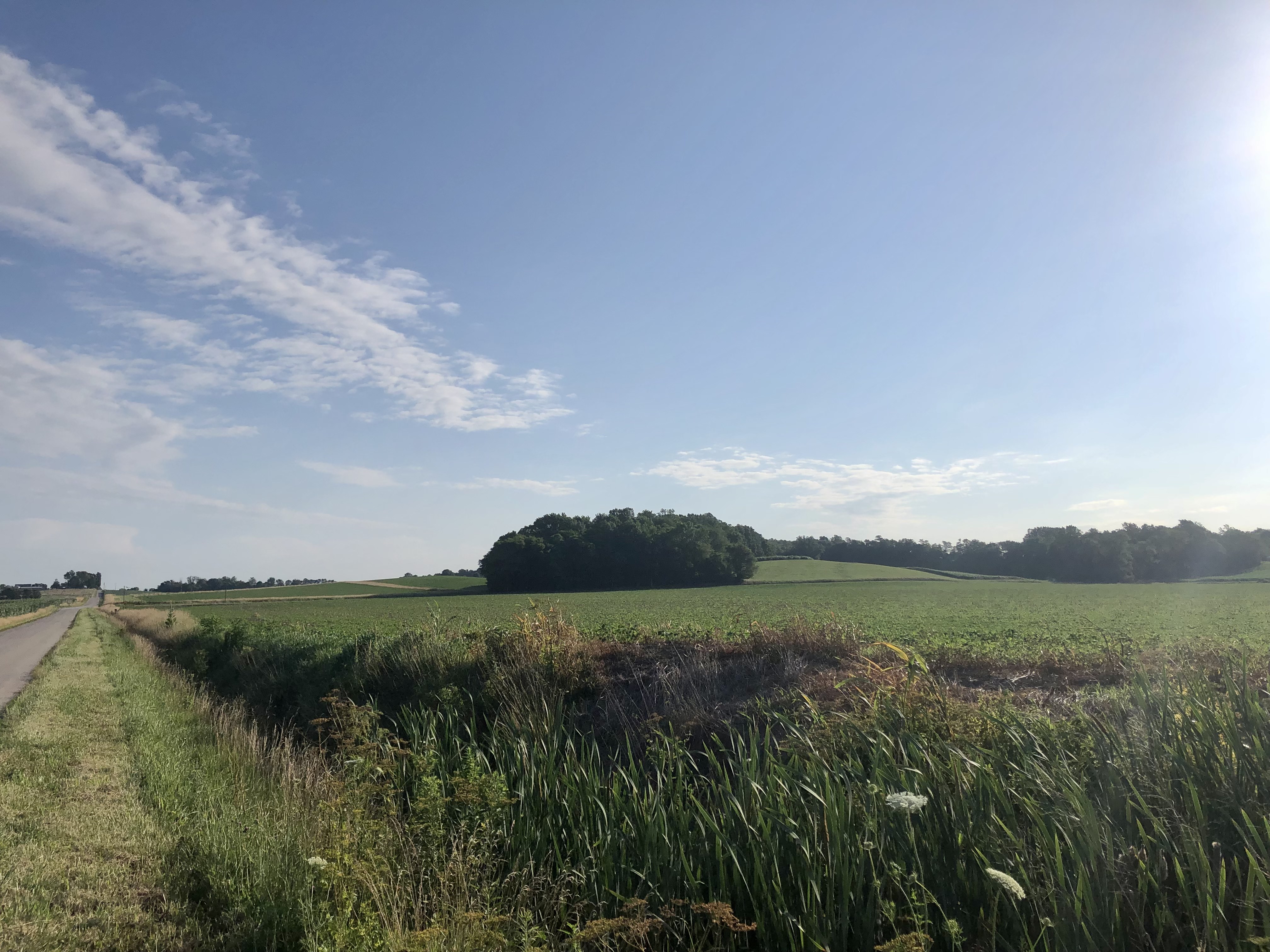I’m still in Southern Indiana, getting ready for my parents’ postponed 50th anniversary celebration. It’s my favorite kind of farm visit, with combine rides and antique tractor repair and plenty of fireflies. Right now, the landscape looks like an imagined ideal of a Midwestern farm scene: rolling fields, mostly green, with the occassional golden hillside, freshly shorn of wheat. On humid evenings, the smell of exhaling corn fills the air.
Contemporary grain farming combines ludicrously expensive high-tech tools (GPS-controlled planters! Real-time yields!) with stuff you have in your closet at home. After my dad finished cutting his wheat, he planted soybeans. The next day he called me up to the shed to help him clean out the planter bins. This involved a metal scoop, a bucket, a shop vac, and a pallet, but also a front loader rigged out with tines, a bean box, an elevator scale, and a smart phone. The bean box, the smart phone, and the scale are essential parts of rural America’s infrastructure.
Rural infrastructure, like infrastructure in general, includes objects and networks that range from the invisible to the hypervisible. One day last week, my sister took me for a thrill ride over the Wabash Cannonball bridge, a one-lane, two-span railroad bridge converted to vehicular use without a whole lot of consideration for things that cars and trucks need, like paving, rails, or signals. When a farmer bought the bridge from the railroad company in 1970, he did two things: He added running planks and a toll booth. Ownership of the bridge has since changed hands twice, first to the town of St. Francisville, Illinois, and later to the State of Illinois. None of these parties did any of the fairly basic things you might expect for a bridge with two separate, single spans of over 1,000 feet that sees regular grain truck traffic, like, say, add a traffic light. Instead, to cross it, you stand up in your seat, peer across to the other side, and hope for the best. This shortcut between Vincennes, Indiana, and Mt. Carmel, Illinois, costs $1.50 each way. I would pay much more than $3 to never cross it again.
I took a bike ride one morning along the Wabash side of the river, just south of Vincennes. Up in Knox County, it’s melon country, and my ride took me past fields and fields of ripening produce, trailers housing migrant workers, and the cut-up school buses used to haul fruit, aka melon buses, aka, another thing that shouldn’t but does cross the Cannonball bridge. My route followed the levee, the kind of essential infrastructure that blends into the landscape unless and until it fails.

Vincennes is Indiana’s oldest settler “city,” a term I use in its loosest sense. Vincennes was/is the northern terminus of the Red Banks Trace, a path used by bison, Native Americans, French trappers, and, eventually, British settlers. It’s usually described as connecting a point on the Ohio River across from Henderson, Kentucky, with Vincennes. Closer to Evansville, portions of the trace remain as local roads, but up in Gibson and Knox Counties, it’s mostly fallen into private hands. A portion of it cuts through land my parents farm. It’s clearly visible in the woods, where a stripe of ground about 10 feet wide sits lower than the surrounding earth. Elsewhere, you can see it, but only if you know to look for it.

I’m sending this missive to you over my parents’ balky internet service, which they’ve cobbled together from a series of hot spots and satellite services. I’m not exactly sure what the signs advertising “Fast Rural Internet!” claim to be selling, but whatever it is, it’s not enough. Just a week of trying to use it makes me wonder how much of rural America’s refusal to abide by pandemic restrictions was about the inability to pivot online. Rural broadband is an invisible yet essential infrastructure that simply does not exist in large swaths of the country. Can an infrastructure be described as failing if it never existed in the first place?
Infrastructure week: Let’s do it, today, tomorrow, next week, next year. Except maybe this time, let’s actually do it. We need it.